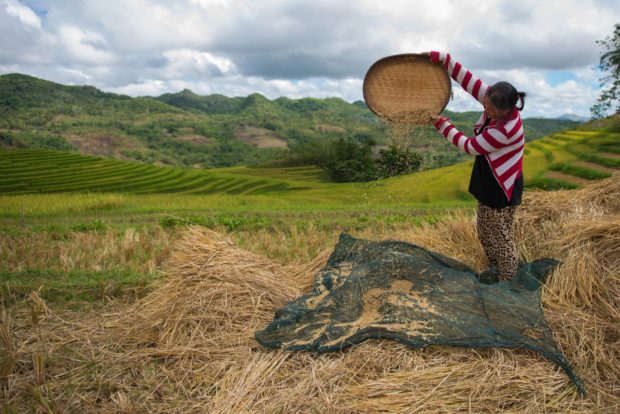
Farmer sorting his palay harvest. Image from the Department of Agriculture website.
MANILA, Philippines — The average farmgate price for dry palay has sunk to its lowest this year just as farmers from typhoon-hit provinces continue to reel from losses due to the series of typhoons that hit this month.
From a high of P19.18 per kilogram in May, the average price has fallen by as much as 20 percent to P15.36 in October. The last time prices picked up was in August when it hit P18.39 a kilo. It has gone down consecutively since.
But Agriculture spokesperson Noel Reyes seemed to be unperturbed by these figures. In a phone interview, he said that the quotation is “okay,” adding that the slump is only due to the harvest season which lasts between October and November.
“That’s okay,” Reyes said, pertaining to the prices. “An average price of P15.36 is not bad. That is the law of demand and supply.”
“It is still harvest season in October, when prices are traditionally low. Combined with typhoons, palay were mostly wet and not thoroughly dried that were sold to traders,” he added.
In Bulacan, Zamboanga City, and Bukidnon, prices have gone down to P11 per kilo. In Cavite and Negros Occidental, rates were at a low of P11.78.
Only the provinces of Palawan, Nueva Ecija, Southern Leyte, and Zamboanga Sibugay were the outliers that were able to command P20 and P21 for a kilo of palay.
Reyes said they have been encouraging farmers to sell their produce to the National Food Authority (NFA) to evade the low prices being offered by traders.
However, the NFA can only procure 33,775 bags of palay every day.
Between January and October, this brings the agency’s total procurement to 439,168 metric tons or less than 3 percent of the expected palay production for this year.
Despite NFA’s limitations, Reyes noted that the Department of Agriculture (DA) has invested billions of pesos in the rice industry and its stakeholders.
Aside from the annual P10 billion given to the rice competitiveness enhancement program, he said the agency has also allocated P6 billion to distribute P5,000 to farmers who are tilling one hectare of land or less.
In a related development, Agriculture Secretary William Dar has also requested for additional funding for NFA.
The grains agency currently receives P7 billion annually, which is rolled over by selling its own stocks.
Dar is asking the administration for a minimum of P15 billion and a maximum of P30 billion for NFA’s operations. Reyes said securing a rice buffer for one day entails P1 billion.